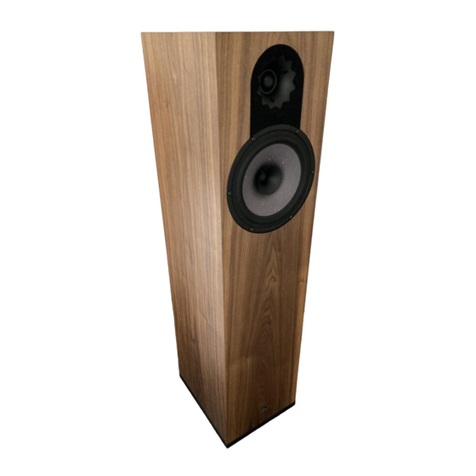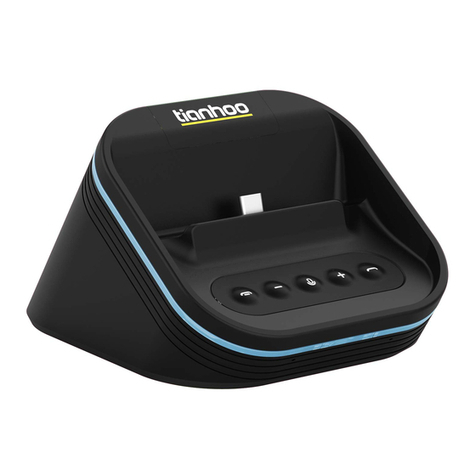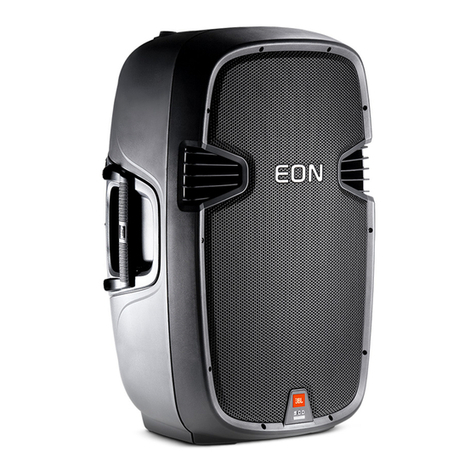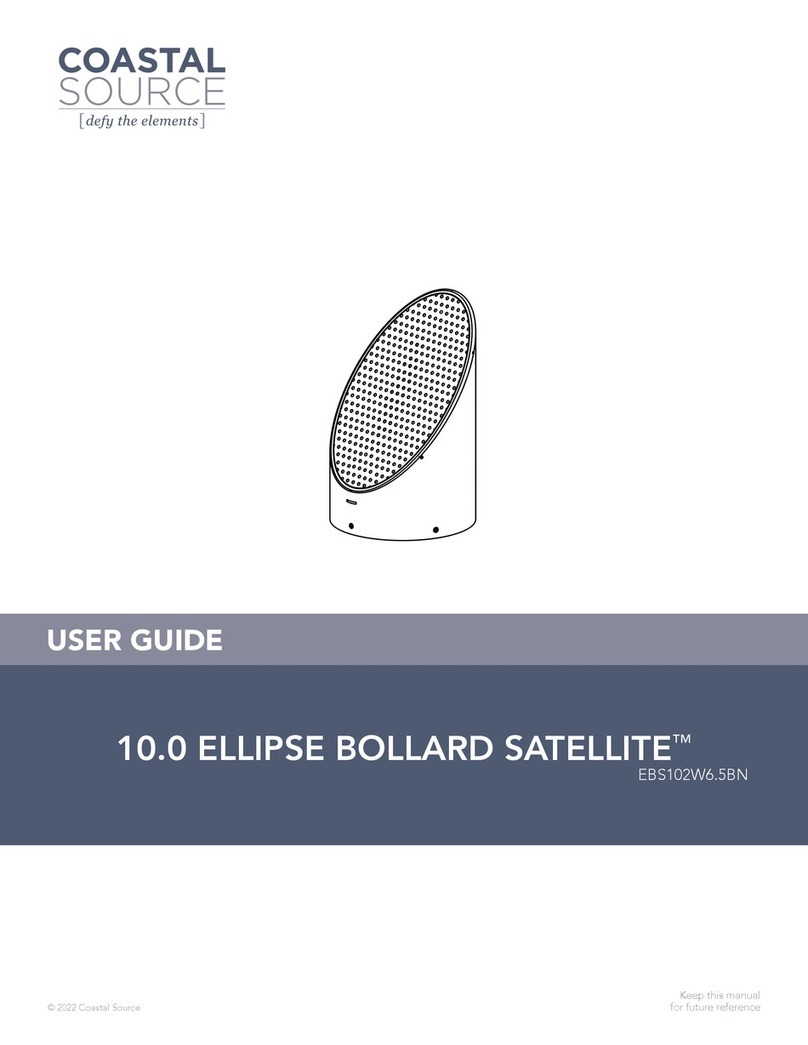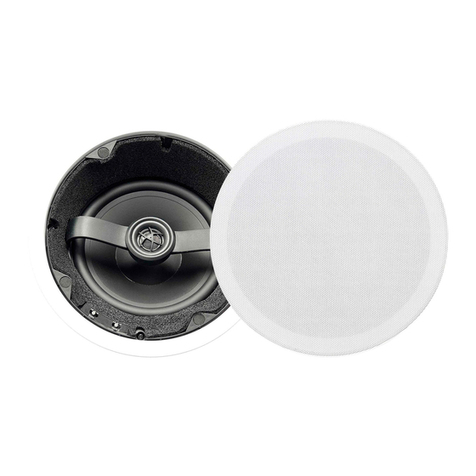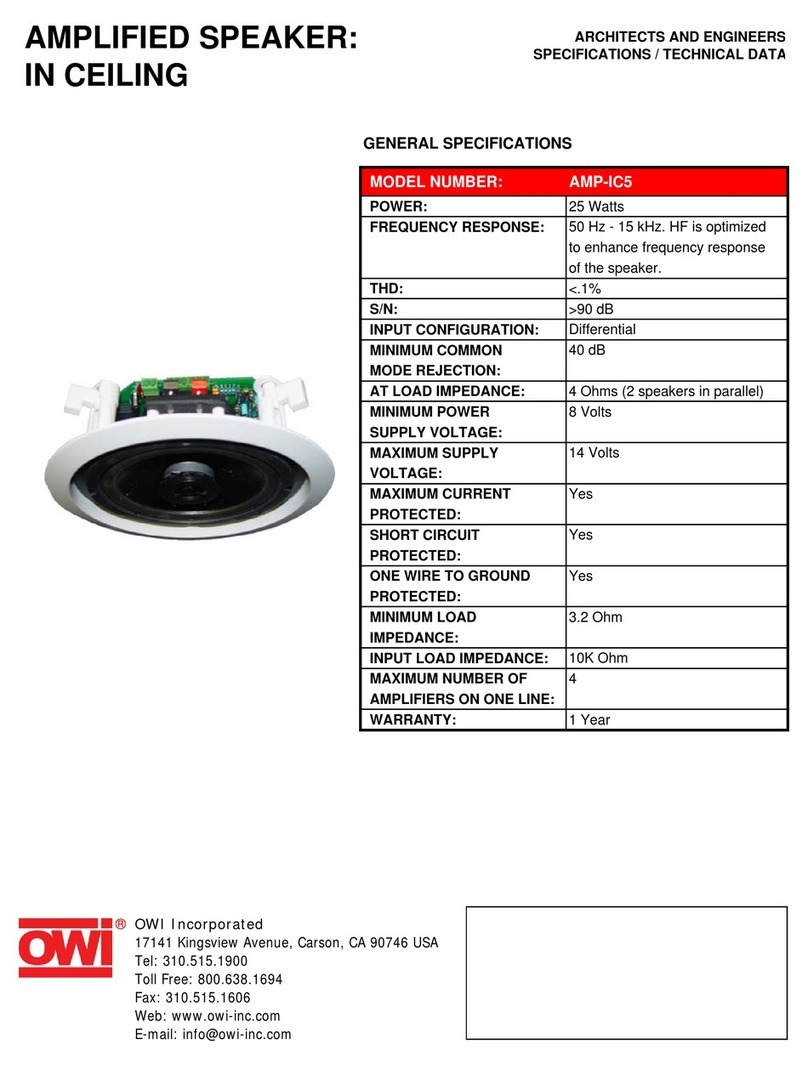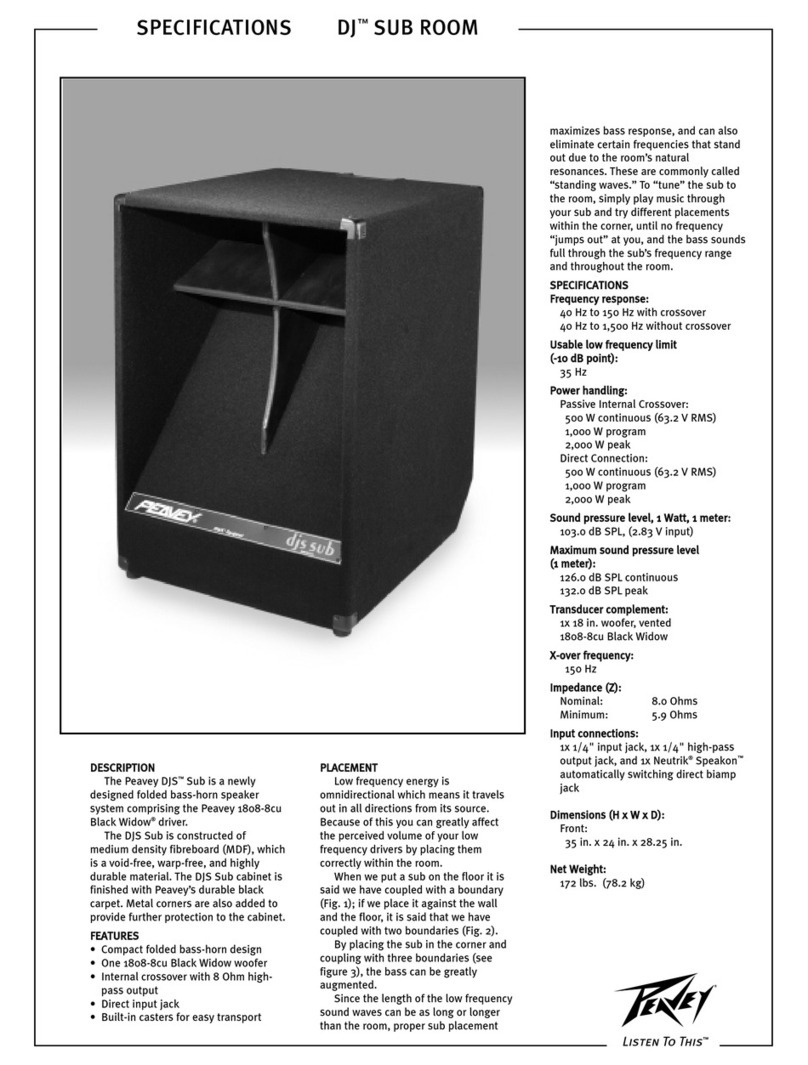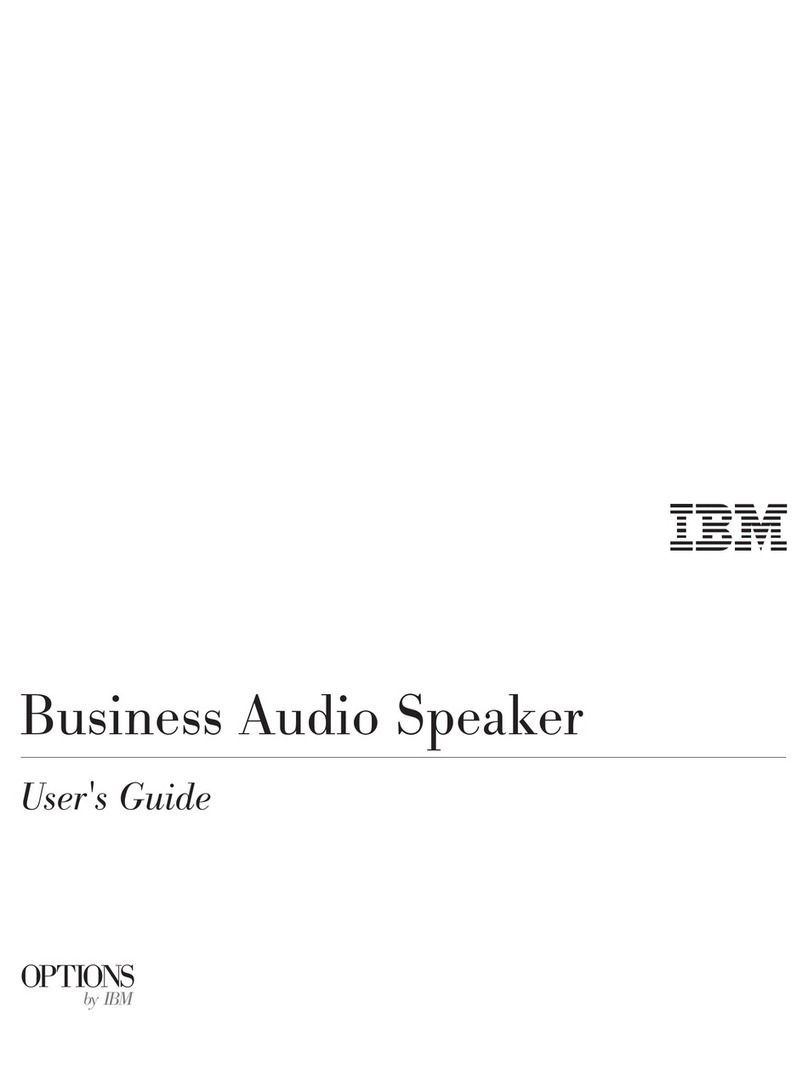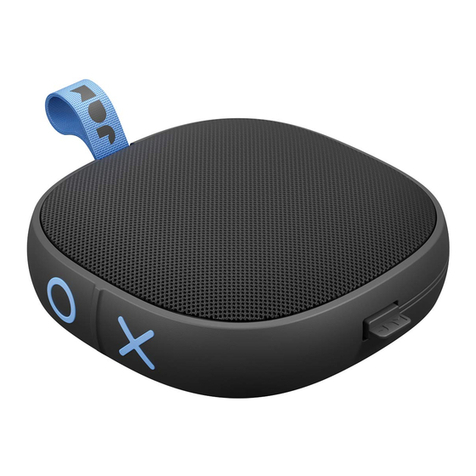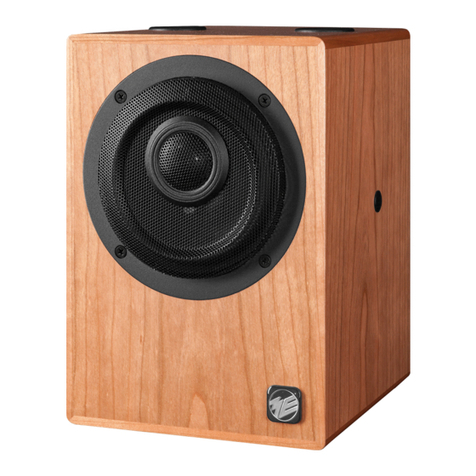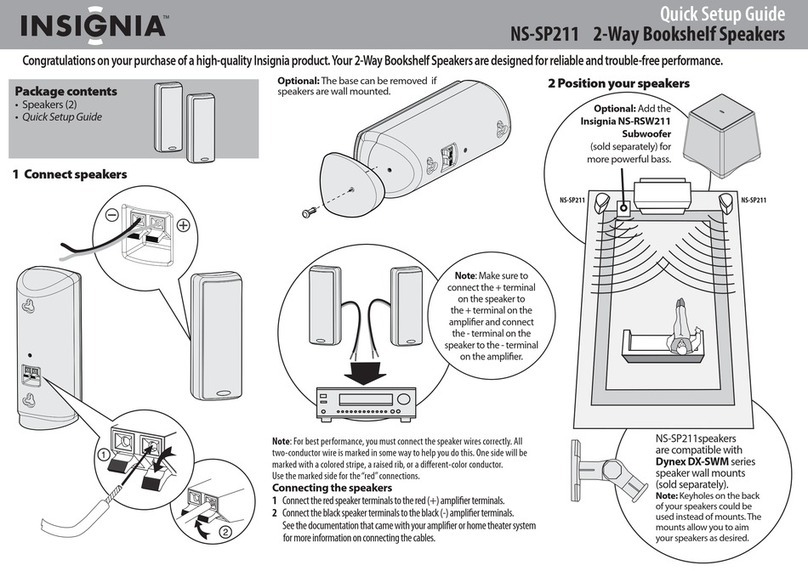Strandberg Audio C10 User manual

Strandberg Audio
User manual
C10

User instructions for Strandberg loudspeakers
Thank you and congratulations for choosing the Strandberg C10
loudspeaker! We at Strandberg Audio hope you will get a lot of
enjoyment from listening to music and that you will get very rewarding
listening sessions for many years to come.
The Strandberg C10
The goal of the Strandberg C10 was to create a speaker with a
combination of visual timeless design and the ability to make you just
listen to music and not to the technical solutions involved.
Where others show off their technical solutions, we try to hide them and
just present a piece of musical furniture that can be nicely placed in your
living room. All the technical solutions are present, but the only role for
them is to recreate the recorded music from your source. We must not
forget, that the purpose of a speaker is to recall an original sound event,
making it live again and providing the same emotions we feel when
listening to a big orchestra, a string quartet, a rock band, a jazz trio or
just a vocal with a piano.
This is why Strandberg Audio thinks of speakers as musical instruments.
We know that good sound depends on the acoustic chamber - just like in
a string instrument. But opposite to music instruments we don’t create
sound, we just reproduce it.
Strandberg Audio has always searched for cabinet shapes and
proportions that will guarantee exceptional control of internal resonance,
perfect acoustics, excellent driver stability, phase response and easy
integration in rooms.
As always, here at Strandberg Audio the total functional design is the
result of the demands for the resulting sound.
Technology
Strandberg C10 is designed using all the know-how we at Strandberg
Audio design team have acquired from producing highly prestigious
speakers for many years, combined with cutting edge measurements

and long critical listening sessions. The speakers are assembled in
Molndal Sweden. The cabinets are made by skilled artisans with careful
selection of the materials used and with strict checks carried out during
the work in progress. This is a guarantee for speaker excellence and
inalterability over time.
All the components are carefully selected, the drivers are specially made
by Scan-Speak and Seas to our specifications, crossover components
and terminal post are from Germany. Crossover are made with great
care and only using high quality components with maximum attention to
the signal route.
1. Unpacking and maintenance
Your speaker should be treated with the same care as you would treat a
piece of furniture. Use a piece of soft cloth and a small quantity of warm
soapy water to clean the loudspeakers. Avoid touching the cone of the
bass unit or the treble dome since this may leave a mark or damage the
dome and spoil its performance. After unpacking, we suggest you retain
all packing material for future transports.
2. Break-in
As with all high-quality loudspeaker systems, the musical performance of
your Strandberg loudspeakers will improve over an initial break-in period.
Please allow your new speakers to play a minimum 50 hours of music at
normal listening levels before doing any critical listening. Up to 200-300
hours break-in will be needed for the speaker to reach it’s fully potential
of great sound.
3. Stability
Use a stable speaker stand, if possible apply damping material in the
stand. Damping the stands is normally a substantial improvement of the
sound. Stands are often delivered with four spikes for acoustical isolation
and height adjustment. To obtain proper mechanical coupling to the floor,
adjust until all four spikes have equal contact. In some cases, if you have

a very soft or weak floor, it can be better to de-couple the speaker from
the floor by soft damping pads between the speaker and the stand.
4. Room positioning
The performance of a loudspeaker system in a room varies with
placement. Ideal positioning of the speakers is 3-4 m apart and
preferably at least 0.5-1m away from side and rear walls. Avoid
distances from walls that correspond to 1/2, 1/4, 1/6 etc., of the room
dimensions. Seek instead odd fractions; 1/3, 1/5, 1/7 etc. to minimize
effects of room related resonances.
The longer distance from the back wall, the deeper stereo image you will
get. You can also place some damping or diffusing material on the back
wall behind the speaker, which can help you to get a deeper stereo
image.
It’s important that the distance from the listener to each speaker is equal.
Differences as small as 1 cm can make difference. Use a small rope or
laser meter to set the distance as equal as possible.
Choose a stand height so that you barely notice the top area of the
speaker when sitting. Then the treble unit will be at the same height as
your ears. You will perceive the most accurate sound stage if you listen
from a position halfway between the loudspeakers and three to four
meters away.
Avoid corner placement as it leads to coloration and often will over
emphasize the lower frequencies. Image stability and stereo perception
is increased if the two speakers are turned slightly towards the listening
position. Start where you just can see around two cm of the inside wall of
the speaker. Close to this is normally the best. More toe in will make the
stereo image and center voices narrower. The other way the voices will
be wider. Find a position where you get a wide and even stereo
perspective from left to right. Then try for best stereo image and center
focus. Objects in the direct sound path can disturb the coherence of the
sound picture. Try out different positions before deciding on a final
arrangement.

For serious listening remove the front grill.
We recommend a listening room from 15-50m2, but the speaker can also
preform excellent in even larger rooms. Happy listening!
5. Connections
We recommend the use of heavy gauge loudspeaker cables of high
quality. Make sure to turn off all amplifiers before connecting your new
speaker to your Hi-Fi system.
Connect the cable to the terminal. Use the marking of the cable to
ensure that the red or ”+” mark of the amplifier is connected to the ”+”
side of the terminal, also marked with red. Often there also is a direction
mark on the speaker cable. It can fx. be an arrow or a text pointing in
direction to the speaker.

6. Power handling
Strandberg Audio recommend using amplifiers within a specific power
range, see under specifications. However, more important is that the
amplifier has sufficient power reserves for handling of the peaks and
transients in the music signal.
The power-rating figure of a loudspeaker is a very imprecise figure.
Since the energy in the music signal varies, neither peak nor average
value is relevant. Power rating of fx. 50W RMS only says that you can
play a continuous tone of 1kHz at this output. It doesn’t mean that you
can turn the volume all the way up on a 50W amplifier and expect a clear
sound and healthy speakers.
The greatest danger to a loudspeaker is a distorted signal. Distortion in
the low frequency range produces overtones in the entire spectrum, with
an energy that can easily damage the tweeter units. And since a more
powerful amplifier can play louder without distortion, we have the
paradox that it is a greater risk to damage speakers by playing loud with
a smaller amplifier.
Caution!
If you hear distortion when you increase the volume this is normally a
sign of overloading the amplifier and you should immediately reduce the
output level. Use of loudness, bass or treble boost increases the risk for
harmful distortion in the amplifier. We recommend that you use such
controls with care or by-pass them if possible.
7. Service
Should your Strandberg loudspeaker system require service, or if you
have difficulty in achieving the fine performance of which your
Strandberg loudspeaker system is capable, consult the Strandberg
dealer where the system was purchased. Your dealer has the knowledge
required to provide expert advice and assistance. In case the dealer is
unable to assist you, you are welcome to contact us at Strandberg Audio
direct by email info@strandbergaudio.com. You also find contact info at
our homepage, www.strandbergaudio.com. Regrettably we can’t give
direct telephone support to end users.

8. Warranty
This Strandberg loudspeaker is warranted to the original purchaser
against factory defects in material or workmanship for a period of one (5)
years from the date of original purchase. This warranty is valid only in the
country of purchase, to the original purchaser and is non-transferable.
Strandberg loudspeakers are music listening devices and should be
used for listening purposes only. They must not be connected to any
other equipment than amplifiers within the specified power range.
Strandberg Audio cannot be held responsible for damage or injuries
caused by improper use or use in violation with the recommendations in
this leaflet.
Specifications
Impedance: 8 ohms
Amplifier recommendation: 25-100 Watt RMS
Sensitivity: 87 dB SPL 1 Watt/1m
Low frequency performance: -3dB 52Hz
Cabinet: Hi density board with internal damping pads
Terminal: WBT Single wire
Dimensions (HxWxD): 358x210x260 mm
Weight: 11,0 kg each
Finish: Walnut matt, White Satin
www.strandbergaudio.com
Molndal Sweden
Table of contents
Other Strandberg Audio Speakers manuals

